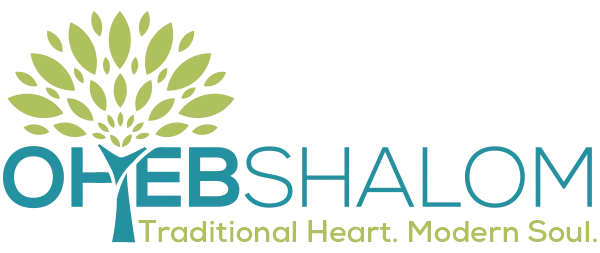One of my earliest Jewish memories is of the shofar. In particular, the final blast of the season, that long blast at the end of Yom Kippur ne’ilah. My memory is of the synagogue elder, ancient to my little girl eyes, holding the Havdalah candle, and – to my horror – beckoning me and my sister to come join him on the bimah. We must have been sitting in the front rows. I was too shy in those days; I wouldn’t do it. From our seats, I watched the flame light, and then saw more than heard the shofar blown in the flickering shadows of the candlelight.
The shofar is one of the highlights of Rosh Hashanah, and that final Yom Kippur service. Tradition holds that we blow it 100 times on Rosh Hashanah morning; according to Jewish law, at least 30 are required. But did you know – that the shofar is blown every morning of Elul, this month leading up to Rosh Hashanah? With no blessings recited before, no words uttered at all. Just the sounds, a brief set that takes only a moment.
Why? If the mitzvah is to hear it on Rosh Hashanah, and then we use it again to close the service on Yom Kippur, why do we blow it daily for a whole month? Because teshuvah takes time. We cannot just wake up three weeks from now ready to jump in. Teshuvah is the work of bringing ourselves into alignment, of living up to the aspirations of our own best possible selves. And that re-alignment takes more than just a day. The shofar wakes us up to what we need to be doing right now, today, this whole month. Not just ordering the brisket, figuring out how to have meals with loved ones during the pandemic, arranging for seats. What we need to be doing is cheshbon ha-nefesh, accounting for our lives, looking at who we’ve become so we can become who we want to be in the new year.
To that end, I offer three suggestions.
- My wonderful colleague Rabbi Jill Zimmerman has created an online guided workbook for your Elul journey at her website, www.jewishsacredagaing.com.
- Spend time outside every day this month. Take a walk, or find someplace to sit. Don’t pick up your phone, check your email, or read anything. Just be outside, giving yourself some time to connect with yourself and nature.
- Hear the shofar every morning. Some mornings I blow it, other days it is the awesome Steve Friedlander; perhaps others will take a turn, too. The shofar comes at the end of morning minyan, so even if you are not able or inclined to log in for the full service, come 30 minutes or so after we start to catch it (on Mondays and Thursdays, make that 40 minutes or so from the start).
In these ways, we can take Judaism up on its annual invitation to live our best lives, working toward an annual reset where we can begin again – if we’ve taken the time to know where we want to start.
